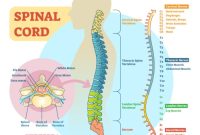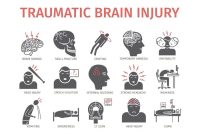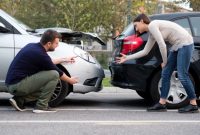Car accidents can have a devastating impact on your physical and emotional well-being. The road to recovery can be long and challenging, but with the right support, you can regain your health and mobility.
Physical therapy and rehabilitation play a crucial role in the recovery process. These therapies can help you manage pain, restore range of motion, and improve your overall function. In this article, we will explore the different types of physical therapy and rehabilitation options available to car accident victims.
Physical Therapy Modalities
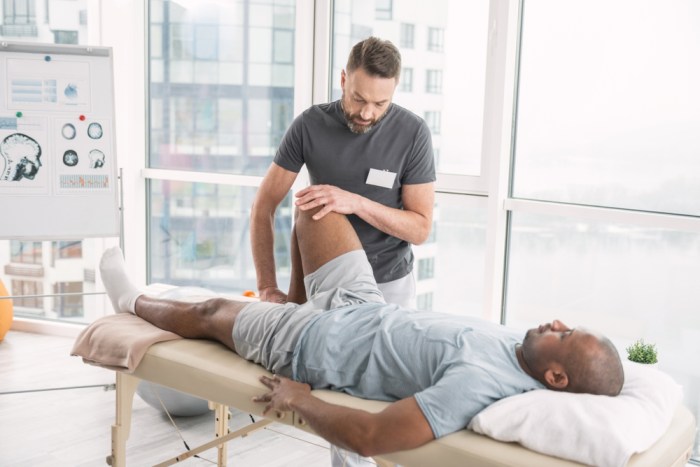
Physical therapy plays a pivotal role in the recovery process following a car accident. It employs a range of modalities to address the physical impairments resulting from the trauma. These modalities aim to alleviate pain, restore mobility, and enhance overall physical function.
Therapeutic Exercises
Therapeutic exercises form the cornerstone of physical therapy for car accident victims. They are designed to improve range of motion, strengthen weakened muscles, and enhance flexibility. These exercises may include:
- Stretching exercises to increase flexibility and reduce stiffness.
- Range of motion exercises to improve joint mobility and prevent stiffness.
- Strengthening exercises to build muscle strength and support the injured area.
Manual Therapy
Manual therapy involves the use of hands-on techniques to manipulate the soft tissues and joints. These techniques can help relieve pain, improve mobility, and restore proper biomechanics.
- Massage therapy to reduce muscle tension and promote relaxation.
- Joint mobilization to improve joint range of motion and reduce stiffness.
- Soft tissue mobilization to release tension in muscles, tendons, and ligaments.
Electrotherapy
Electrotherapy utilizes electrical currents to stimulate muscles, reduce pain, and promote healing.
- Electrical stimulation to strengthen muscles and improve nerve function.
- Ultrasound therapy to reduce pain and inflammation.
- Transcutaneous electrical nerve stimulation (TENS) to block pain signals.
Other Modalities
In addition to these modalities, physical therapy may also incorporate:
- Hydrotherapy to utilize the buoyancy and warmth of water for pain relief and improved mobility.
- Heat and cold therapy to reduce pain and inflammation.
- Assistive devices such as canes, crutches, or wheelchairs to aid in mobility.
Rehabilitation Options
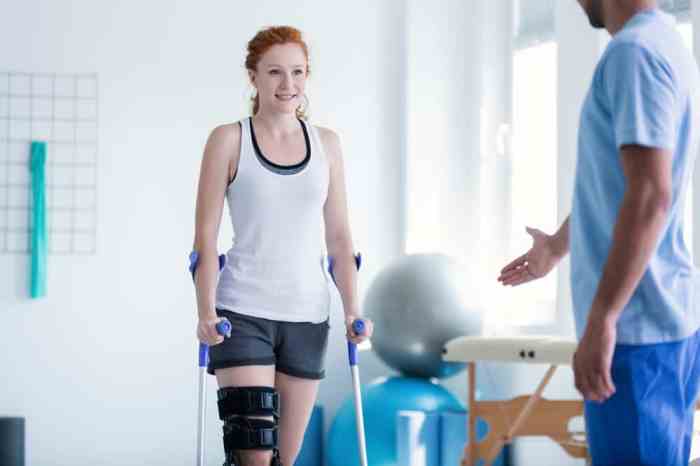
Following a car accident, rehabilitation plays a crucial role in restoring an individual’s physical, cognitive, and emotional well-being. There are various rehabilitation programs available, each tailored to the specific needs and severity of the injuries sustained.
Inpatient Rehabilitation
Inpatient rehabilitation is typically recommended for individuals with severe injuries requiring intensive medical supervision and 24/7 care. Patients reside in a hospital or rehabilitation center, receiving comprehensive therapy and medical attention. The goal of inpatient rehabilitation is to maximize functional recovery, improve mobility, and enhance independence.
Outpatient Rehabilitation
Outpatient rehabilitation is suitable for individuals with less severe injuries or those who have progressed beyond the need for inpatient care. Patients attend scheduled therapy sessions at a clinic or rehabilitation center while living at home. Outpatient rehabilitation focuses on maintaining and improving functional abilities, promoting pain management, and preventing complications.
Home-Based Rehabilitation
Home-based rehabilitation is an option for individuals who have difficulty accessing outpatient services or who prefer to recover in the comfort of their own homes. A physical therapist or other healthcare professional visits the patient’s home to provide therapy and guidance.
Home-based rehabilitation aims to improve mobility, reduce pain, and promote self-management of symptoms.
Interdisciplinary Collaboration
Successful rehabilitation requires collaboration among a team of healthcare professionals, including physicians, physical therapists, occupational therapists, speech-language pathologists, and psychologists. Each professional brings their expertise to develop a comprehensive rehabilitation plan that addresses the patient’s physical, cognitive, and emotional needs.
Types of Injuries and Treatment Plans
Car accidents can result in a wide range of injuries, each requiring specific treatment plans. Physical therapy plays a crucial role in the rehabilitation process, helping individuals regain function and mobility.
The following table provides an overview of common car accident injuries, their symptoms, and recommended physical therapy interventions:
Injury Type, Symptoms, and Recommended Physical Therapy Interventions
| Injury Type | Symptoms | Recommended Physical Therapy Interventions |
|---|---|---|
| Whiplash | Neck pain, stiffness, headaches, dizziness | Range of motion exercises, strengthening exercises, manual therapy |
| Sprains and strains | Pain, swelling, bruising, limited range of motion | Rest, ice, compression, elevation (RICE), gentle stretching, strengthening exercises |
| Fractures | Pain, swelling, deformity, limited range of motion | Immobilization, pain management, range of motion exercises, strengthening exercises |
| Traumatic brain injury (TBI) | Headache, nausea, vomiting, confusion, memory loss | Cognitive rehabilitation, balance exercises, coordination exercises |
| Spinal cord injury | Numbness, tingling, weakness, paralysis | Electrical stimulation, strengthening exercises, functional training |
Stages of Recovery
Recovering from a car accident is a complex process that involves both physical and emotional healing. The stages of recovery can be divided into three main phases: acute care, subacute rehabilitation, and long-term rehabilitation.
Acute Care
The acute care phase begins immediately after the accident and lasts until the patient is stable and can be discharged from the hospital. During this phase, the focus is on stabilizing the patient’s condition, managing pain, and preventing complications. Treatment may include surgery, medication, and physical therapy.
Subacute Rehabilitation
The subacute rehabilitation phase begins after the patient is discharged from the hospital and lasts for several weeks or months. During this phase, the focus is on improving the patient’s range of motion, strength, and endurance. Treatment may include physical therapy, occupational therapy, and speech therapy.
Long-Term Rehabilitation
The long-term rehabilitation phase begins after the patient has completed subacute rehabilitation and lasts for as long as necessary. During this phase, the focus is on helping the patient regain their full range of function and return to their previous level of activity.
Treatment may include physical therapy, occupational therapy, and psychological counseling.Each stage of recovery presents its own unique challenges. During the acute care phase, patients may experience pain, swelling, and difficulty moving. They may also be anxious or depressed about their injuries.
During the subacute rehabilitation phase, patients may experience frustration as they work to regain their strength and range of motion. They may also have difficulty adjusting to their new limitations. During the long-term rehabilitation phase, patients may experience setbacks as they try to return to their previous level of activity.
They may also have difficulty coping with the emotional impact of their injuries.Despite the challenges, recovery from a car accident is possible. With the right treatment and support, patients can regain their full range of function and return to their previous level of activity.
Resources and Support
After a car accident, it is essential to seek support and assistance to navigate the physical, emotional, and financial challenges. Various resources and support groups are available to provide guidance and aid during this difficult time.
Financial Assistance
*
- Government assistance programs: Check with your local government or social services agencies for programs that provide financial aid to car accident victims.
- Insurance benefits: Explore your insurance policies to determine if they cover medical expenses, lost wages, and other related costs.
- Victim compensation funds: In some cases, state-run victim compensation funds may provide financial assistance to victims of violent crimes, including car accidents.
Legal Representation
*
- Attorneys specializing in personal injury: Consider seeking legal representation from an attorney who specializes in handling car accident cases. They can help you navigate the legal process, file claims, and negotiate settlements.
- Legal aid organizations: Contact legal aid organizations that provide free or low-cost legal services to low-income individuals.
Emotional Support Services
*
- Support groups: Join support groups specifically designed for car accident victims. These groups offer a safe space to connect with others who have experienced similar trauma.
- Crisis hotlines: Contact crisis hotlines for immediate emotional support and guidance. Trained counselors are available 24/7 to provide confidential assistance.
- Mental health professionals: Seek professional help from therapists or counselors who specialize in trauma and post-traumatic stress disorder (PTSD).
Outcome Summary
Recovering from a car accident is a journey that requires patience, determination, and the right support. Physical therapy and rehabilitation can help you regain your physical and emotional health. By working with a team of experienced professionals, you can overcome the challenges of recovery and live a full and active life.
Frequently Asked Questions
What are the most common types of injuries sustained in car accidents?
The most common types of injuries sustained in car accidents include whiplash, sprains, strains, fractures, and head injuries.
How long does it take to recover from a car accident?
The recovery time from a car accident varies depending on the severity of the injuries. Minor injuries may heal within a few weeks, while more serious injuries may take months or even years to heal.
What are the benefits of physical therapy after a car accident?
Physical therapy can help you manage pain, restore range of motion, improve strength and flexibility, and prevent future injuries.
What are the different types of rehabilitation programs available after a car accident?
There are a variety of rehabilitation programs available after a car accident, including inpatient, outpatient, and home-based programs. The type of program that is right for you will depend on the severity of your injuries and your individual needs.

